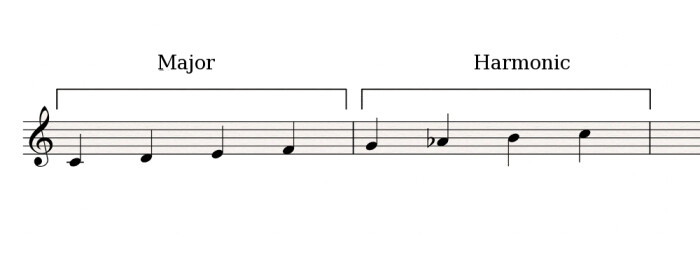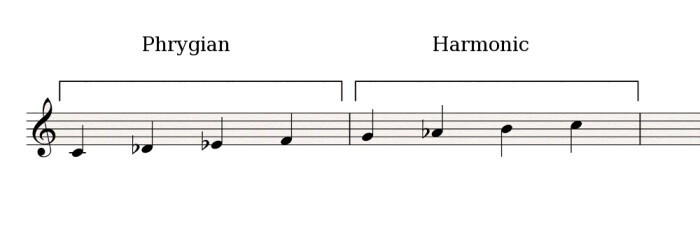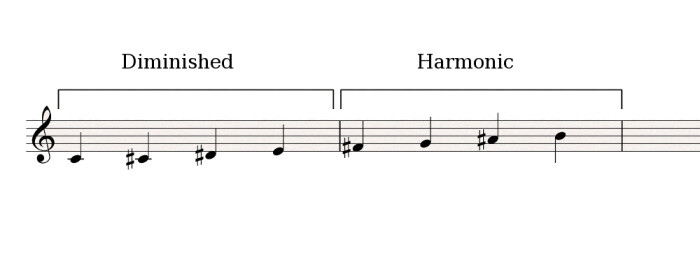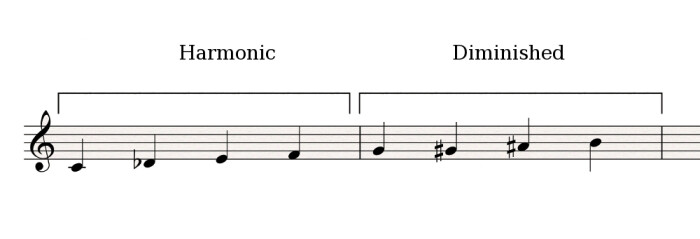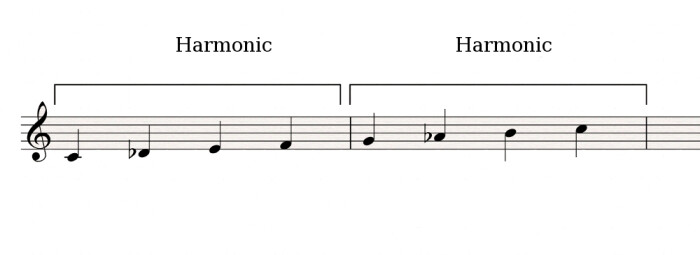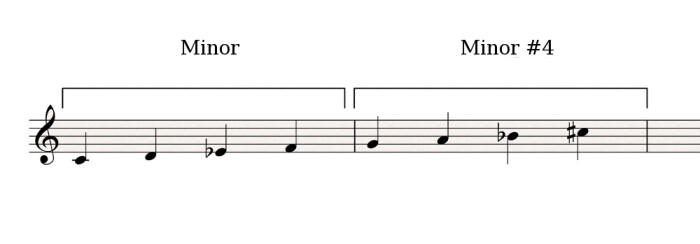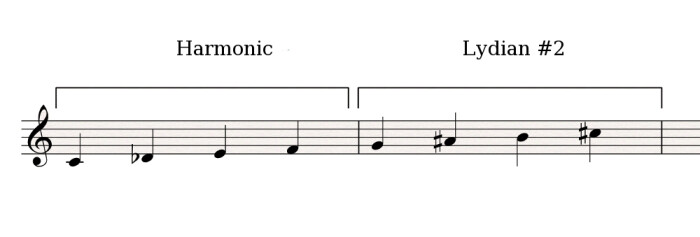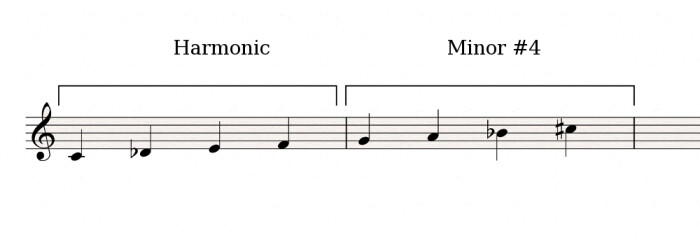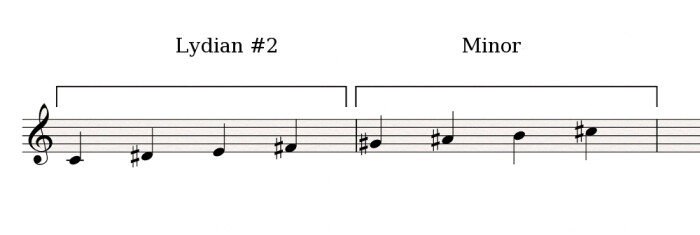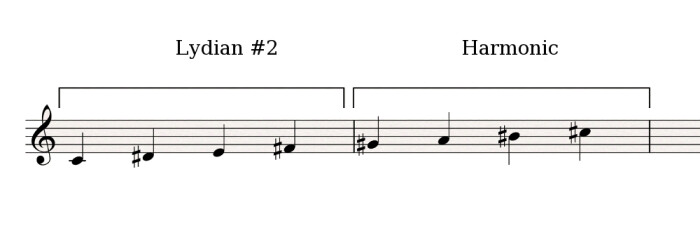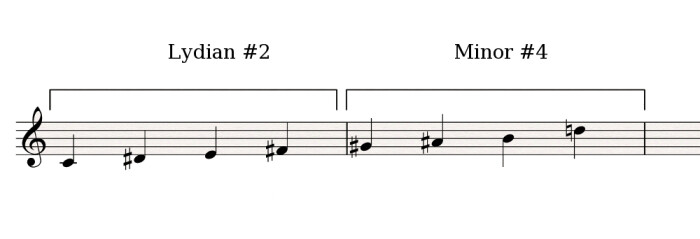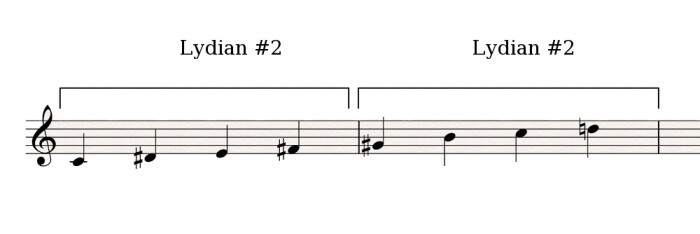Last time we started exploring the tetrachords of the altered modes in general and the synthetic scales created from the tetrachords of the melodic minor scale in particular. You saw that apart from the tetrachords of the natural modes, altered modes provide a whole new range of "building bricks": the diminished, harmonic, Lydian #2 and minor #4 tetrachords. Today I invite you to discover the synthetic scales you can create with all these new elements.

Syntehtic scales of the harmonic minor scale modes
Remember that the Lydian tetrachord disappears from the modes of the harmonic minor scale. We’ll address this in a forthcoming article. And there are some scales whose name I couldn’t find out, so if anyone out there knows the names, please share them with us in the comments!
Putting together a major and a harmonic tetrachord, you get the famous harmonic major scale I told you about in article 63:

Combining a Phrygian and a harmonic tetrachord, you get a Neapolitan minor scale:

Putting together a diminished and a harmonic tetrachord, you get an octatonic scale whose name I don’t know:

Combining a diminished and a Lydian #2 tetrachord, you get the following scale, whose name I couldn’t find:

Putting together a harmonic and major tetrachord, you get the Indian Mela Suryakantam scale:

Combining a harmonic and a minor tetrachord you get the inverted harmonic minor scale (we’ll study the inverted scales later on):

Putting together a harmonic and diminished tetrachord, you get the Maqam Hijaz octatonic scale:

Combining two harmonic tetrachords, you get the double harmonic major scale described in article 63:

Mixing a Lydian #2 and a diminished tetrachord you get a Aeolian flat 1 mode:

Combining a minor #4 and a diminished tetrachord, you get this scale, whose name I don’t know either:

Non-octaving synthetic scales of the harmonic minor scale modes
Unsurprisingly, with augmented tetrachords like the Lydian #2 and minor #4 tetrachords you get mainly non-octaving scales. In an upcoming article you’ll learn why they don’t have a name.
Combining of a major and a Lydian #2 tetrachord you get:

Combining of a major and a minor #4 tetrachord you get:

Combining of a minor #4 and a Lydian #2 tetrachord you get:

Combining of a minor and a minor #4 tetrachord you get:

Combining of a Phrygian and a minor #4 tetrachord you get:

Combining of a harmonic and a Lydian #2 tetrachord you get:

Combining of a harmonic and a minor #4 tetrachord you get:

Combining of a Lydian #2 and a minor tetrachord you get:

Combining of a Lydian #2 and a harmonic tetrachord you get:

Combining of a Lydian #2 and a minor #4 tetrachord you get:

Combining of a Lydian #2 and a Phrygian tetrachord you get::

Combining two Lydian #2 tetrachords you get:

Combining of a minor #4 and a major tetrachord you get:

Combining of a minor #4 and a Phrygian tetrachord you get:

Combining of a minor #4 and a harmonic tetrachord you get:

Combining of a minor #4 and a Lydian #2 tetrachord you get:

Combining two minor #4 tetrachords you get:


